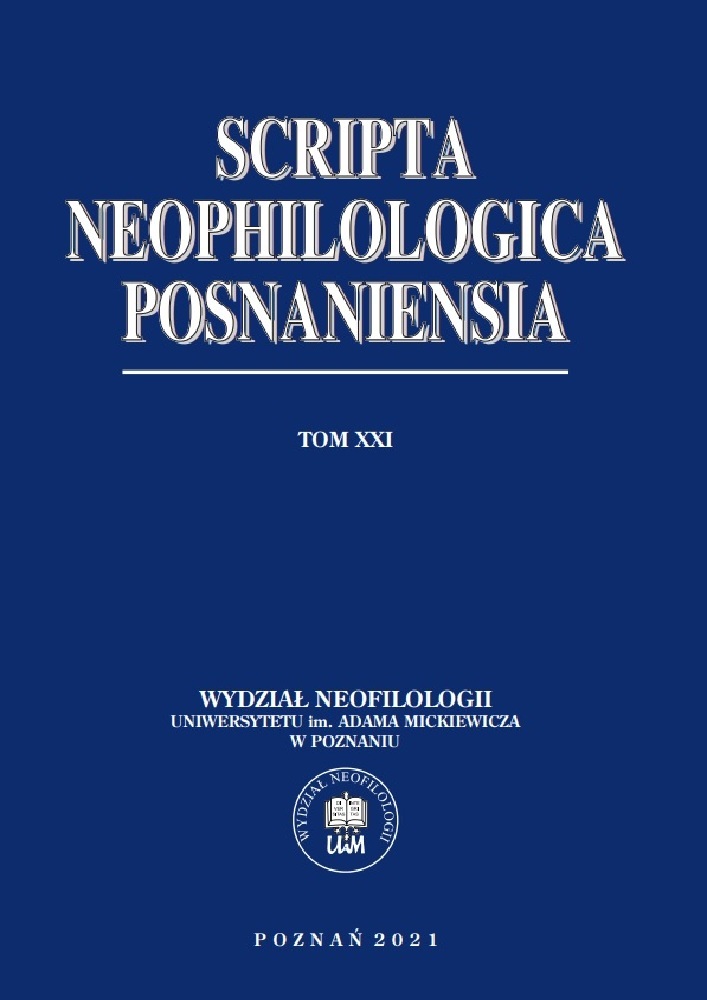Abstract
Kim Il Sung’s 1964 and 1966 conversations with linguists are appropriately deemed important as the establishment of the North’s “cultured language” as a standard, as well as guidance related to language purification and script. In the analysis of inflection point related to language planning and policy in the North, is the often guidance on re-enshrinement of teaching “Chinese characters” (hanja) in North Korean education. Clearly this was official pronouncement of functional, synchronic digraphia, which has been preserved and operationalized down to the present. Scholarship on these conversations, amounting to policy guidance, attribute the shift in policy related to script as an inflection point. The author of this article concurs with its importance, but with respect to digraphia in the North, the conversations related to hanja instruction served as a confirmation for what was a broad trend in North Korean language planning during the years 1953-1964, a language planning and policy fait accompli, diminishing the portrayal of the conversations as a digraphic inflection point in North Korea.
References
Chang, S. I. 1973. “Apʼ-ŭro uri kŭlja-nŭn ka-ro pʼurʼŏssŏya handa”. Munhwaŏhaksŭp 3. 34-35.
Cho, U. S. 2018. Ch’uakhan son-ŭi chinjja wŏnjo-nŭn pukhan Kim Il-sŏng. Mediapen, 22 February 2018. http://www.mediapen.com/news/view/334990 (accessed on 30 March 2020).
Chŏng, C. D. 1956. “Chosŏn’ŏ munja kaehyŏk (1)”. Chosŏn ŏ’mun 6. 81-89.
Chosŏnrodongdangjŏngch’aeksa: Ŏn’ŏbumun. 1973. Sahoegwahakwŏn ch’ulp’ansa (ed.). P’yŏngyang: Sahoegwahakwŏn ch’ulp’ansa.
Chu, T. I. 2000. “Pukhan-ŭi hanmun kyoyuk pangbŏp”. In: Han’gukhanmun gyoyuk hakhoe (ed.). Hanmungyoyuk’yŏn’gu 15. Seoul: Pak I-jŏngch’ulp’ansa. 471-499.
Fabre, A. 1994. “Re´forme et modernization de la langue core´enne”. In: Fodor, I. and C. Hagège. (eds.). Language reform - History and future VI; La réform des langues - Histoire et Avenir VI; Sprachreform - Geschichte und Zukunft. Hamburg: Helmut Buske Verlag GmbH. 235-256.
Han, C. J. 1965. “Hanmun sillyŏk chego-rŭl wihan myŏt kaji pangdo”. Inmingyoyuk 12. 29.
Hannas, W. C. 1991. “Korean views on writing reform”. In: Mair, V. H. (ed.). Sino-Platonic Papers 27. Schriftfestschrift: Essays in Honor of John DeFrancis on His Eightieth Birthday. Philadelphia: University of Pennsylvania. 85-94.
Hatori, R. 1991. “Pukhan-ŭi hanja kyoyuksa”. In: Kim, Min-su (ed.). Pukhan-ŭi Chosŏn’ŏ yŏn’gusa, 1945-1990 2. Seoul: Nokjin. 266-290.
Hŏ, T. C. 1987. “Ilbon-esŏ pon pukhan-ŭi hanja kyoyuk”. Pukhan 187. 102-109.
Hŏ, T. C. 1990. “Chochʼongnyŏn kyoyuk”. In: Kim, H. C. (ed.). Pukhan-ŭi kyoyuk. Seoul: Ŭlyuʼmunhoesa. 366-392.
Hong, Y. S. 1977. Nambukhan’ŏn’ŏgaenyŏm-ŭi ijilhwayŏn’gu. Seoul: Kukt’ot’ong’ilwŏn.
Kang, Y. 1989. “Ŏn’ŏhak-e kwanhan Kim Il-sŏng kyosi punsŏk – 1964nyŏn, 1966nyŏn kyosi-rŭl chungsim-ŭro”. In: Kim. M. S. (ed.). Pukhan-ŭi ŏhak hyŏngmyŏng. Seoul: Tosŏch’ulp’an paek’ŭi. 11-19.
Kim, C. W. 1978. “Linguistics and language policies in North Korea”. In: Korean Studies 2. Honolulu: Faculty Center for Korean Studies, University of Hawai‘i. 158-175.
Kim, H. S. 1984. “Nambukhan ŏn’ŏhak mit ŏn’ŏjŏngch’aek-e kwanhan pigyo yŏn’gu”. Chejudaehakkyo nonmunjip 17. 127-153.
Kim, I. S. 1964/1968. “Chosŏn’ŏ-rŭl paljŏnsik’igi wihan myŏtgaji munje (1964.1.3)”. Munhwa’ŏ haksŭp 2. 1-7.
Kim, I. S. 1964/1975. “Some problems related to the development of the Korean language: talk with the linguists”. In: On Juche in our revolution. Pʼyŏngyang: Foreign Languages Publishing House. 384-397.
Kim, I. S. 1966/1969. “Chosŏn’ŏ-ŭi minjokjŏk t’ŭksŏng-ŭl olke sallyŏnagallde taehayŏ (1966.5.14)”. Munhwa’ŏhaksŭp 3. 1-9.
Kim, Il Sung 1966/1975. “On correctly preserving the national characteristics of the Korean language: talk with the linguists”. In: On Juche in our revolution. Pʼyŏngyang: Foreign Languages Publishing House. 511-528.
Kim, M. S. 1985. Pukhan-ŭi kuk’ŏyŏn’gu. Haksul yŏn’guch’ongsŏ 22. Seoul: Koryŏdaehakkyo ch’ulp’anbu.
Kim, M. S. 1999. “Pukhan-ŭi hanja kyoyuk”. Saeguk’ŏ saenghwal 9.3. 93-124.
Kim, M. S. 2005. “Pukhan-ŭi hanja kyoyuk”. In: Hanja-nŭn kuk’ŏ-ŭi kibon’ida. 101-114. Seoul: Chŏnt’ongmunhwayŏn’guhoe.
Kim, P. J. 2012. Kim Il-sŏng kyosi “hanja, 3,000ja-rŭl karŭchʼyŏra”. Chogabje.com. http://www. chogabje.com/board/view.asp?C_IDX=48020&C_CC= AZ (accessed on 1 December 2017).
Kim, T. H. 1964. “Ŏhwi mit munjang chido-esŏ ŏdŭn kyŏnghŏm”. Munhwaŏhaksŭp 7. 14.
King, R. 1997. “Language, politics, and ideology in the postwar Korea”. In: McCann, D. R. (ed.). Korea briefing: toward reunification. Armonk, NY and London: M. E. Sharpe. 107-144.
King, R. 2007. “North and South Koreas”. In: Simpson, A. (ed.). Language and national identity in Asia. Oxford: Oxford University Press. 200-234.
Ko, Y. G. 1999. Pukhan-ŭi ŏn’ŏ’munhwa. Seoul: Sŏuldaehak’kyoch’ulp’anbu.
Kristensen, H. and R. S. Norris. 2017. “A history of US nuclear weapons in South Korea”. Bulletin of the Atomic Scientists. 73.6. 349-357.
Kumatani, A. 1990. “Language policies of North Korea”. International Journal of the Sociology of Language 82. 88-107.
Lee, I. S. and S. R. Ramsey 2000. The Korean language. Albany, NY: State University of New York Press.
Lee, S. O. 1992. “Pukhan-ŭi ŏhwiyŏn’gu/sajŏnp’yŏnch’an – Namhan-gwaŭi tongjilsŏng hoebok-ŭl wihan kich’o yŏn’gu – “. Ŏhakʼyŏnʼgu 28.3. 599-619.
Pak, C. T. 1959. “Kwahak kisul yong’ŏ-ŭi t’ŭksŏng-gwa kŭ-ŭi chosŏng subŏp-e kwanhayŏ”. Chosŏn ŏ’mun 1. 89-96.
Ri, H. S. 1965. “Hanmun poksŭp su’ŏp-esŏ yuŭihal chŏm”. Inmin’gyoyuk 1. 17.
Ryu, R. 1974. “Hyŏngmyŏng-ŭi widaehan Kim Il-sŏngdongji-ggesŏ naenoŭsin kŭljagae hyŏksasang”. Munhwaŏhaksŭp 1. 25-27.
Saeokp’yŏn 1963. Chosŏn minjujuŭi inmin konghwaguk kwahakwŏn, kojŏn yŏn’guso p’yŏnch’an (comp.). P’yŏngyang: Kwahakwŏn ch’ulp’ansa.
Shim, J. K. 1988. “Munhwaŏ-wa maldadŭmgi”. Kukʼŏsaenghwal 15. 2-20.
Shipper, A. W. 2010. “Nationalisms of and against Zainichi Koreans”. Asian Politics and Policy. 1.2. 55-75.
Sim, Kyŏng-ho 1989. “Pukhan-ŭi hanmun kyogwasŏ”. Ko, Yong-gŭn (ed.). Pukhan insik 7. Mal-gwa gŭl. 197-221. Seoul: Ŭlyumunhwasa.
Sohn, H. M. 1991. “Language policies and language divergence in the two Koreas”. In: Mair, V. H. (ed.). Sino-Platonic Papers 27. Schriftfestschrift: Essays in Honor of John DeFrancis on His Eightieth Birthday. Philadelphia: University of Pennsylvania. 95-102.
Sŏ, K. S. 1979. Pukhan-ŭi ‘munhwaŏ’-e kwanhan yŏn’gu. In: T’ong’ilmunjeyŏn’gu 8. 113-126. Taegu: Yŏngnamdaehakkyo.
Tian, W. X. 2014. Tóng shēng yì qì: Zhōngguó 1958nián cóng cháoxiǎn quánbù chèjūn fāng'àn de xíngchéng. Cambridge, MA and Yenching: Harvard-Yenching Working Paper Series.
Yi, C. S. 2008. “Choe Hyŏn-bae-wa Kim Tu-bong – ŏnʼŭi pundan-ŭl makʼŭn tu hanʼgŭlhankja”. Yŏksabipʼyŏng 82.
Yi, P. G. 2014. “Mal[ŏnʼŏ]-ŭn nari-ŭi ponsŏng – Chu Si-gyŏng, Choe Hyŏn-bae, Yi Hŭi-sŭng-ŭl chungsim-ŭro”. Saegukʼŏsaenghwal 24.3. 3-19.
Yi, Y. P. 1989. “Pukhan-ŭi hanja kyoyuk-e daehayŏ”. In: Kim, Min-su (ed.). Pukhan-ŭi ŏhak hyŏngmyŏng. Seoul: Tosŏch’ulp’an paek’ŭi. 365-377.
Yi, Yun. P. 1991. “Pukhan-ŭi kuk’ŏsunhwasa”. In: Kim, Min-su (ed.) Pukhan-ŭi Chosŏn’ŏ yŏn’gusa, 1945-1990 1. Silyongbunya. Seoul: Nokjin. 33-56.
